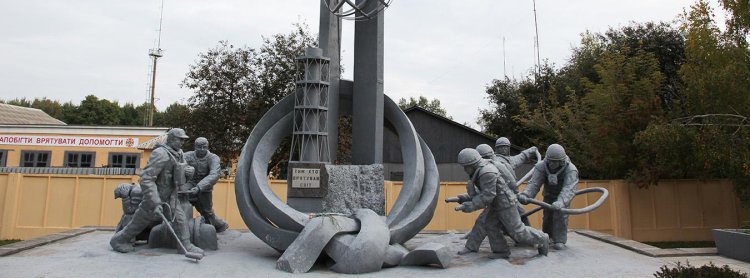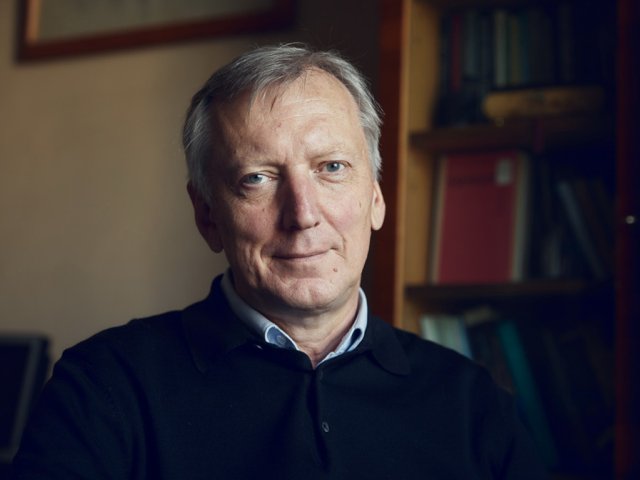Monument to firefighters who participated in the liquidation of the consequences of the Chernobyl disaster in April 1986.
The Chernobyl Nuclear Power Plant was built for peaceful purposes, it was supposed to generate a capacity of 6000 MW. Having stopped only at a peak capacity of 4000 MW, it was still the most powerful in the USSR, but the whole world associates the Chernobyl NPP not with large capacities, but with the largest accident in the history of nuclear energy.
In 1970, the marking of the future excavation began in the Vyshgorodsky District of Ukraine, 110 km from Kyiv. The city of Pripyat was built for the construction workers, and, despite its abandonment, has become one of the most famous cities in the world. Seven years later, the first power unit of the station started working. There were four of them working at the time of the accident.
On April 26, 1986, at 1:23 a.m., during the design test of turbine generator No.8 at power unit No.4, a hydrothermal explosion occurred, as journalist Adam Higginbotham, who conducted more than 10 years of work based on declassified archives and conversations with the disaster actors, wrote about it: “Giant steel tanks were torn like wet cardboard…” (quoted by Lenta.ru). In total, 30 fires were found, they were extinguished by the joint forces of the military unit, Pripyat and Kyiv firefighters. During the explosion of the fourth power unit, one person was killed, another died the next day because of his injuries. But the emergency situation’s impact on the participants of the consequences elimination did not end there… People were called to the fire urgently; they did not have special protective suits. As a result, 134 employees of the Chernobyl nuclear power plant, fire and rescue teams developed radiation sickness, some of them died during the following months…
According to TASS, the intense fire lasted 10 days, during which the total release of radioactive materials into the environment amounted to about 14 exabecquerels (about 380 million curies). The entire city of Pripyat (47,500 people) was urgently evacuated, and in the following days – the population of the 10-kilometer zone around the Chernobyl nuclear power plant. The surviving power units functioned for a long time: only in 2010 the Chernobyl nuclear power plant completely stopped operating.
The pollution spread not only across the territories of present-day Ukraine but also across other territories of the USSR, including Belarus and Russia.
In 1990, the Soviet Government recognized the need for international assistance. Initially, the aid was humanitarian; then, in 2002, the United Nations announced that the strategy would be revised – assistance began to be provided with greater attention to the revival of the affected territories. In 2016, the UN General Assembly adopted a resolution proclaiming April 26 as the International Chernobyl Disaster Remembrance Day.
On the 35th anniversary of the accident, Scientific Russia published an interview with Alexander Vladimirovich Rubanovich – Head of the Laboratory of Ecological Genetics and the Department of Ecological Genetics of the Vavilov Institute of General Genetics, Professor at MIPT. In the interview, he shared his impressions from the scene: “The first impression was totally stunning because huge doses fell on the surrounding nature. The famous Yellow Forest is really an amazing sight. In addition, the endless morphoses of plants immediately attracted attention. These are not mutations: under the influence of high doses of radiation, certain developmental disorders occur in plants, and the plant does not die but acquires incredible forms. I took the photos with me. The pine tree looks like some kind of redwood. Or, let’s say, I remember a plantain – a familiar, lush plantain, but with a flat stem. Most plant species after these grandiose doses acquired developmental disorders. The following year they completely disappeared. All plants have acquired more or less their usual appearance.” More in the interview.
Sources:
Chernobyl. Myths and facts. TASS
Chernobyl Nuclear Power Plant. Wikipedia
International Chernobyl Disaster Remembrance Day, April 26. UN
“If we make it till the morning, we will live forever.” Lenta






















